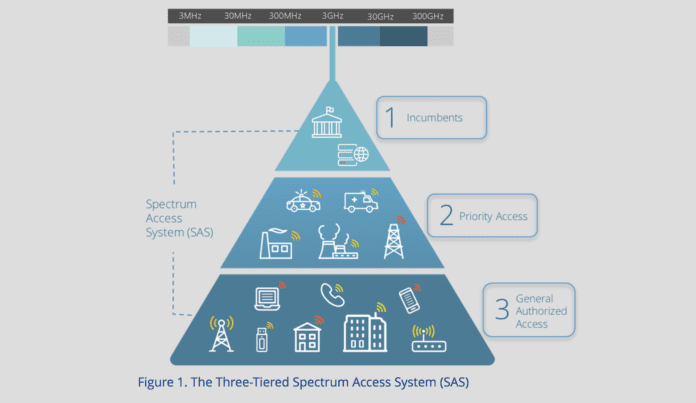Verizon is busy testing indoor and outdoor small cells that will operate in the 3.5 GHz spectrum bands, and this week the carrier said the first use case will be outdoor small cells used to offload traffic from lower spectrum bands. The company described its CBRS small cells and said it plans to deploy them first in places where network usage is high and traffic offload can improve the user experience.
As CBRS-capable smartphones start to hit the market, Verizon plans to move those devices onto the 3.5 GHz spectrum when they come within range of a CBRS small cell.
“We are capable of configuring the network and devices in a way that enables the device to be assigned to the network that will best serve that device,” said Bill Stone, Verizon VP for technology development and planning.
Stone said that Verizon will be selling CBRS smartphones this year, but did not name the manufacturers. Qualcomm has already developed a CBRS modem, but so far no device manufacturers have announced plans to use this modem in a smartphone. Apple in particular is a question mark because of its ongoing legal dispute with Qualcomm and its decision to use Intel modems in some versions of the iPhone.
Indoor use cases
Stone said indoor use cases will also be important for CBRS, but traffic offload will not be the primary objective. Instead, he envisions CBRS small cells supporting specific vertical applications like smart manufacturing.
Verizon will be able to customize specific applications that corporate customers could run on an LTE network using CBRS small cells, Stone said. If the carrier also provides mobile devices to the customer’s workforce, it will be able to supply CBRS-capable smartphones.
Some of the CBRS spectrum band will be unlicensed, and companies will have the opportunity to create their own LTE networks without carrier involvement. Stone said some companies may choose this approach, but their LTE networks will not interoperate fully with carrier networks.
“That would essentially be an island, almost like Wi-Fi, and not integrated with the rest of wireless network,” Stone said.
In addition, companies that want to use CBRS may not have the means to acquire a spectrum license, and some of this spectrum will be licensed. The Federal Communications Commission is expected to make unlicensed bands available first, and then auction priority access licenses at a later date.

